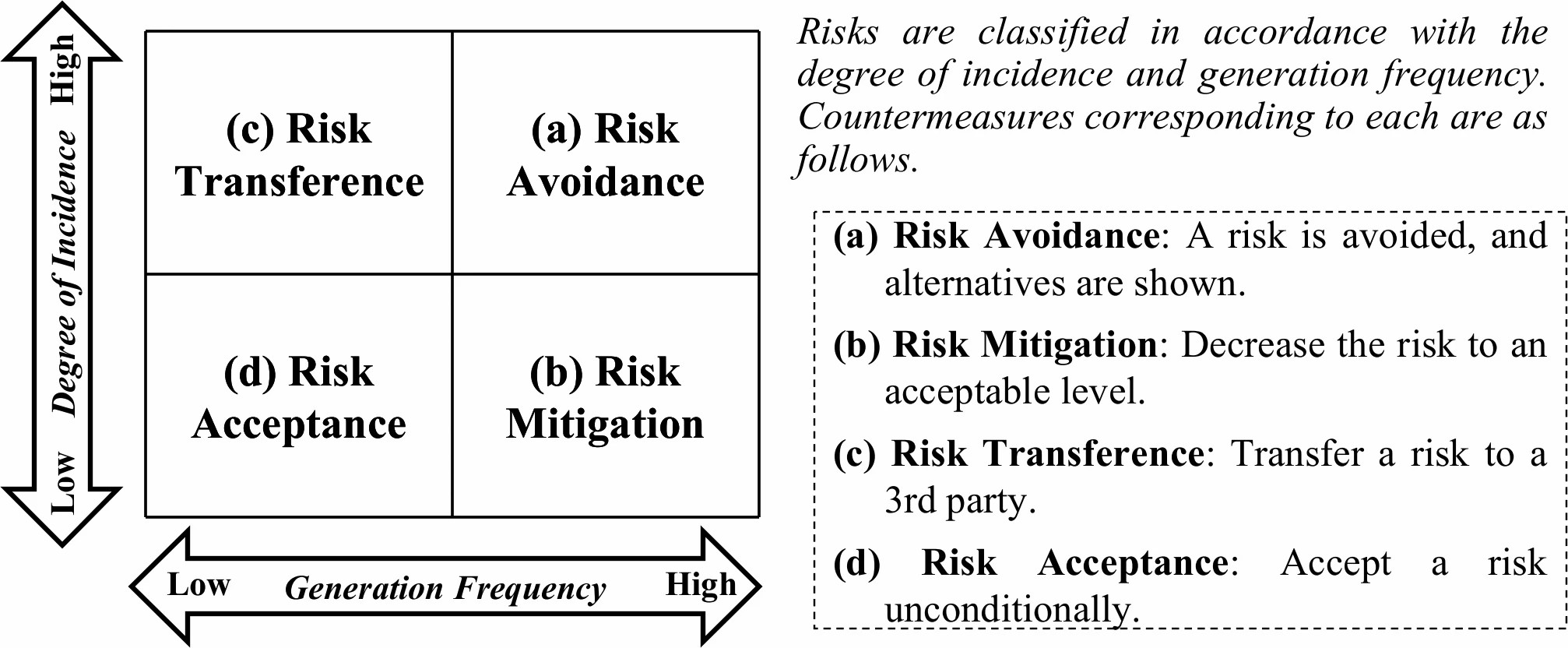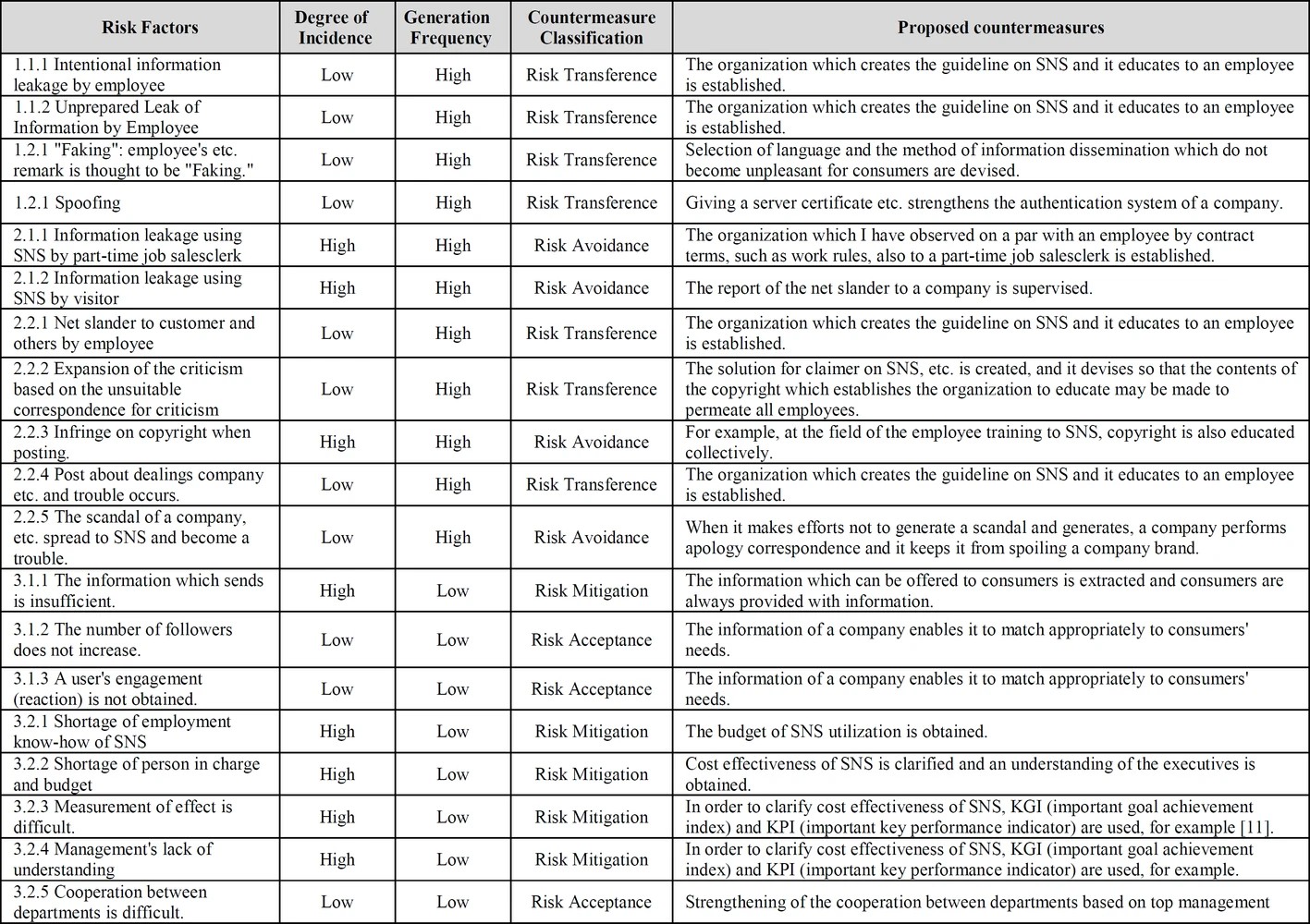Abstract
I. Introduction
In recent years, social media (it abbreviates to SNS after this), such as Twitter [1] and Facebook [2], are progressing with the popularization of the Internet. Moreover, not only an individual but use of a company is increasing as a user. In investigation of IDC Japan, the SNS capacity factor in the company in the 2012 fiscal year is 36.9%, and the rise often points is seen as compared with the 2011 fiscal year [3]. And it is “advertisement” that was the highest about the utilization purpose and the use of SNS in a company, and rates are 63.2% of 400 companies which are utilizing SNS [4]. The trend which is going to strengthen and complement with SNS from this “advertisement” which was being made by the mass media, such as a newspaper and television, until now is seen. On the other hand, the mid-and long-term use purposes, such as a “brand” and “an increase in a potential customer”, are increasing as the degree of SNS utilization of a company increases [4]. It is thought that there is expectation for the information diffusion between the users who are the features of SNS as a background of such use. In the conventional marketing, it was that the mass media, such as television and radio, offer “one way information dissemination” to consumers.
On the other hand, in marketing using SNS, it is possible it not only to disseminate information only to those who are interested in its own brand, but to disseminate information to its own brand to those who are not interested. Furthermore, SNS is very effective at the point that construction is possible to those who are not interested through the new point of contact of “friendship.” [5]
In this way, utilization of SNS in a company is increasing every year as ICT-ization progresses. That is, SNS is useful to give the opportunity for the product of their company and service to advertise easily what kind of thing it is. However, many risks exist also in SNS. In the example of the latest Japan, there is an incident which sent to Twitter the photograph in which the salesclerk of the convenience store went into the freezer for food [6]. As the result, the convenience store was obliged to the apology and the franchise contract canceled. In this way, the risk of SNS is actualizing reliance loss of a company etc. However, the countermeasure against a risk of receiving SNS of a company is not enough.
In this paper, risk assessment of SNS in a company is performed, and the solution is proposed. In addition to the convenience by the SNS utilization in a company, this contributes to the improvement in safety of SNS utilization.
II. Summary of SNS
A. Definition of SNS
SNS is often used by the mass media, such as TV news and a newspaper, in recent years. The definition of SNS is shown in the following. SNS is one of the information media expanded on the Internet. In SNS, they are the media containing social elements, such as information distribution using the information dissemination by an individual, communication between individuals, and connection of people and a person [7].
B. Feature of SNS
In order to disseminate information using equipment etc., a large amount of funds are required for the conventional mass media, and information has been disseminated only in one way. However, since SNS appeared, the fund for the equipment which disseminates information has not necessarily been required. And information can also disseminate information to both directions instead of one way. In this way, the feature of SNS is as follows. The sources of information which the visitor itself needs can be chosen from various dissemination subjects. Circulation of information is controlled using human relations, such as a friend and a coworker. Next, service of typical SNS is mentioned [8].
1) Twitter
A twitter is communication service of registration no charge which shares the comment contribution of the 140-character restrictions called “a murmur.” In this SNS, whose observation is also free and it has become a mechanism in which information gathers also for a follower (the user who has followed up a certain user) automatically. Many information is transmitted as a follower increases, and the influence of the observation also becomes large. Moreover, there is a function of “ReTweet” which tells a pleasing observation to a follower. By this function, the transfer speed of information becomes still quicker. When the smart phone was carried, since it was contributed freely, the twitter spread as a word-of-mouth tool again. Many companies are beginning to take notice of the service which can be used for this word-of-mouth advertisement [1].
2) Facebook
Facebook is perfect real name property and is no charge. In Facebook, it is the feature that a real name and a face photo-portrait are needed for user's registration. Unlike other social networks, it can have neither nickname nor two or more account. The reason this SNS attracts attention on business is existence of the highly efficient community service “Facebook page (old fan page)” which can be used for free. When disseminating information from a company, a user with a high possibility of accepting the information tends to find the page. Moreover, since deep communication can also be taken on the page, popularity has been acquired. Furthermore, there is a “Like” button as a word-of-mouth effect. Since it realizes at a glance who the person who pushed this button is, the word-of-mouth effect is expected [2].
III. Risk Assessment of Sns Utilization
A. Extraction of Risk Factor
The RBS (Risk Breakdown Structure) method which is the typical method of risk management is used for extraction of a risk factor [9]. A result is shown in Table 1. As shown in the table, the risk factor in SNS utilization of a company was analyzed hierarchical from a comprehensive viewpoint, and 19 items of risk factor was extracted on the whole.

B. Risk Analysis in SNS Utilization
Next, we devised potential countermeasures against the identified risks; these are
shown in Table 1. The risk matrix method was used to deduce these countermeasures [13]. As shown in
Fig. 1, this method classifies risks into four kinds, i.e., Risk Transference, Risk Mitigation, Risk Acceptance , and Risk Avoidance , in accordance with their generation frequency and degree of incidence. Furthermore,
it gives guidelines to draw up countermeasures. Table 2 lists the classification of the risk matrix methods in correspondence with its proposed
countermeasures.

Figure 1.Figure 1. Risk matrix method

C. Consideration
Here, the tendency for every measure over each phenomenon is analyzed based on Table 2.
- Risk Transference : seven risk measures were set to Risk Transference. The main countermeasures were creating the guideline on SNS to an employee and establishing the organization to educate. This is clarifying the posture as a company and clarifying locus of responsibility.
- Risk Mitigation : The number of the risk measures of Risk Mitigation was five. It is clarifying cost effectiveness by SNS utilization as proposed measures, and strengthening an understanding of executive officers.
- Risk Avoidance : The number of risks of measures having been set to Risk Avoidanceestablishing the organization which can always be supervised for SNS.
- Risk Acceptance : The number of risks of having been set to Risk Acceptance was three. As proposed measures, marketing which understood the characteristic of SNS is important.
IV. Conclusion and Future Work
In this paper, risk assessment in SNS utilization of a company was performed. As a detailed countermeasure, the company showed clearly that it is necessary to take the countermeasure against a risk focusing on following three.
Thus, it is three, “deducing to SNS utilization of cost effectiveness”, “the countermeasure against blog flaming”, and “an employee's countermeasure against a leak of information.” In “cost effectiveness deducing over SNS utilization” deduced from Risk Mitigation and Risk Acceptance, a company is good to take in and calculate the index of both KGI (important goal achievement index) and KPI (important key performance indicator) [11]. In “the countermeasure against blog flaming” deduced from Risk Avoidance and Risk Transference, in order not to carry out blog flaming from every day, it is fully cautious of the method of an observation. It is thought that it is necessary to perform manual-ization of apology correspondence as a countermeasure when blog flaming occurs. In “the employee's countermeasure against a leak of information” deduced from Risk Transference, it was shown clearly that it is important how a guide policy is made to spread.
As mentioned above, the risk assessment of SNS utilization of a company was shown. It is thought that it can contribute to secure SNS utilization of a company by this.
A future work is performing quantitive evaluation to a proposal.
Acknowledgments
This work was supported by the Japan Society for the Promotion of Science (JSPS, KAKENHI Grant Number 24300029).
References
- [1]C. Dwyer, Trust and privacy concern within social networking sites: A comparison of Facebook and MySpace, Proceedings of the Thirteenth Americas Conference on Information Systems, Keystone, ColoradoAugust 09–12 2007
- [2]H. Kwak, What is Twitter, a Social Network or a News Media?, WWW 2010, April, 2010, Raleigh, North Carolina, USA
- [3]IDC Japan investigation: ITmedia news, (in Japanese) http://www.itmedia.co.jp/news/articles/1210/23/news100.html
- [4]Tribal Media House, Inc. & Cross marketing Inc., “Social-media white paper 2012”.
- [5]Progressing social media and social marketing, (in Japanese), http://www.yhmf.jp/pdf/activity/adstudies/vol_34_01_01.pdf
- [6]The newest current-events term 2015 editions, Seibido Shuppan, 2013.
- [7]IT term dictionary, e-Words, (in Japanese) http://e-words.jp/w/E382BDE383BCE382B7E383A3E383ABE383AIE38387E382A3E382A2.html
- [8]DIAMOND, Inc., Social network revolution, http://www.diamond.co.jp/book/9784478015766.html
- [9]Risk Breakdown Structure, http://www.justgetpmp.com/2011/12/risk-breakdown-structure-rbs.html
- [10]Cox's risk matrix theorem and its implications for project risk management, http://eight2late.wordpress.com/2009/07/01/cox%E2%80%99s-risk-matrix-theorem-and-its-implications-for-project-risk-management/
- [11]Activecore Inc., KPI of social media, (in Japanese)http://www.activecore.jp/column/sns_6

